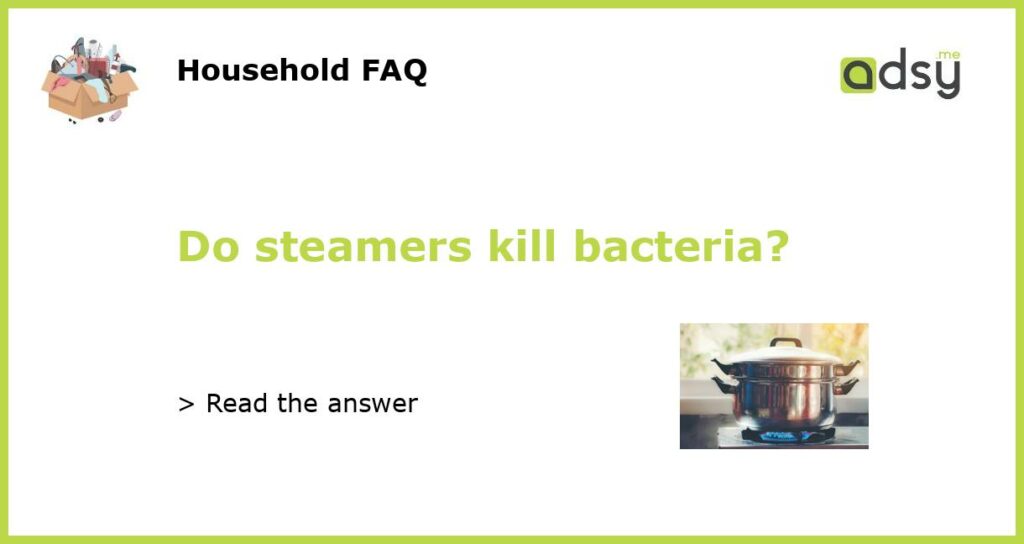Headline: How Steamers Work to Kill Bacteria
Steamers are a popular tool used to clean and sanitize various surfaces. One common question many people have is whether steamers are effective in killing bacteria. In this article, we will explore how steamers work and their ability to eliminate bacteria.
Headline: The Science Behind Steam Cleaning
Steam cleaning involves using high-temperature water vapor to clean and disinfect surfaces. The process begins with a boiler heating water to produce steam. This steam is then released through a nozzle or brush attachment onto the surface being cleaned.
When exposed to high heat, bacteria and other microorganisms are sensitive and can be easily destroyed. The steam penetrates the surface and breaks down the cell walls of bacteria, killing them effectively. This makes steamers a powerful and chemical-free method to sanitize and disinfect surfaces.
Headline: The Temperature and Exposure Time Matter
Steamers use high temperatures to kill bacteria, but the effectiveness of the process depends on the temperature and exposure time. According to several studies, bacteria are typically killed at temperatures between 160°F (71°C) and 212°F (100°C).
However, different types of bacteria have varying heat resistance. Some bacteria may require longer exposure times or higher temperatures to ensure complete elimination. It’s also important to note that not all steamers are capable of reaching or maintaining the required temperatures for effective bacteria eradication.
Headline: Steamers vs. Traditional Cleaning Methods
Compared to traditional cleaning methods, steamers offer several advantages when it comes to killing bacteria. While traditional methods like using chemicals or disinfectant wipes can be effective, they may leave behind residues or harmful fumes.
Steamers, on the other hand, only use water vapor, making them environmentally friendly and safe for use around children and pets. They also eliminate the need for multiple cleaning products, saving time and money in the long run.
In addition, steamers have the ability to penetrate porous surfaces, such as upholstery or mattresses, effectively killing bacteria that may be hiding deep within. This makes steam cleaning a more thorough and efficient method of sanitizing various surfaces.
Headline: Limitations of Steamers in Killing Bacteria
While steamers can effectively kill bacteria, certain limitations should be taken into consideration. Firstly, steam cleaning is primarily suitable for hard surfaces like floors, walls, and tiles. Soft surfaces, such as carpets or mattresses, may not be effectively sanitized using steam alone.
Secondly, steam cleaning is not suitable for all types of bacteria. Some heat-resistant bacteria may require additional disinfection methods to ensure complete elimination. It’s important to consider the specific bacteria or pathogens you are targeting and consult professional advice if needed.
Lastly, steam cleaning is a surface-level treatment and may not reach bacteria in deep cracks or crevices. Proper preparation and thorough cleaning of the surface are necessary to maximize the effectiveness of steamers in killing bacteria.






